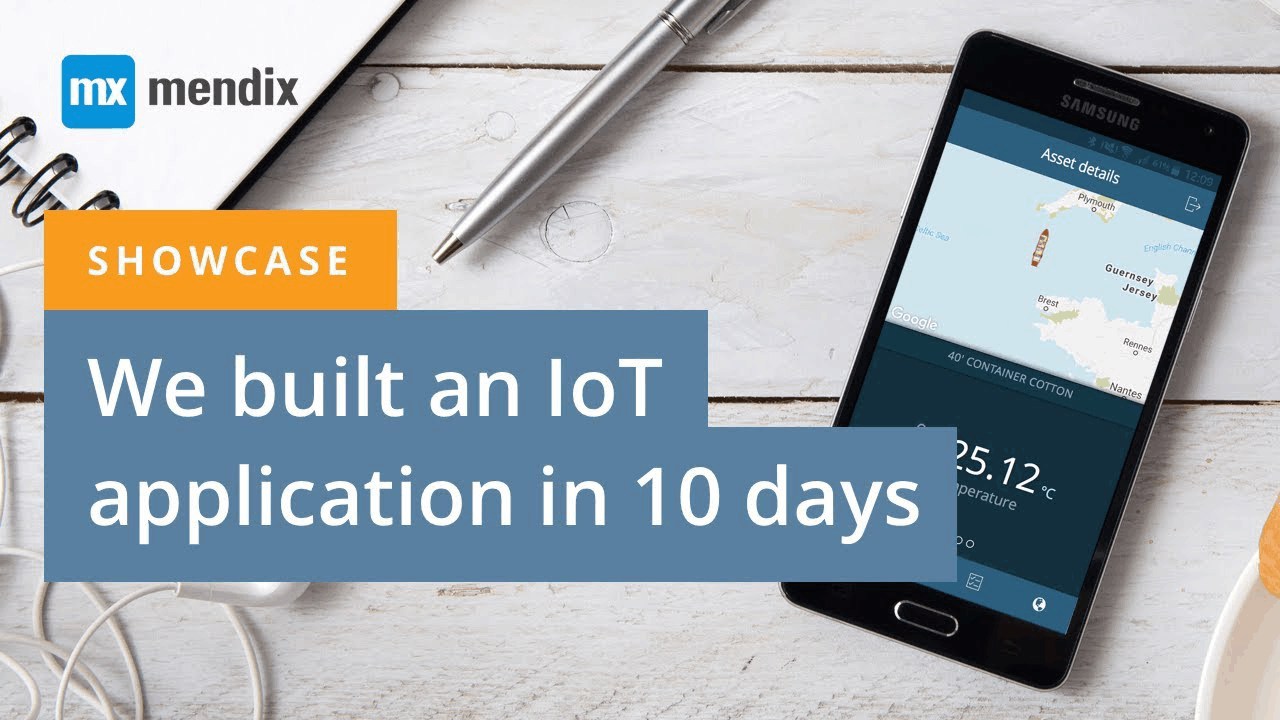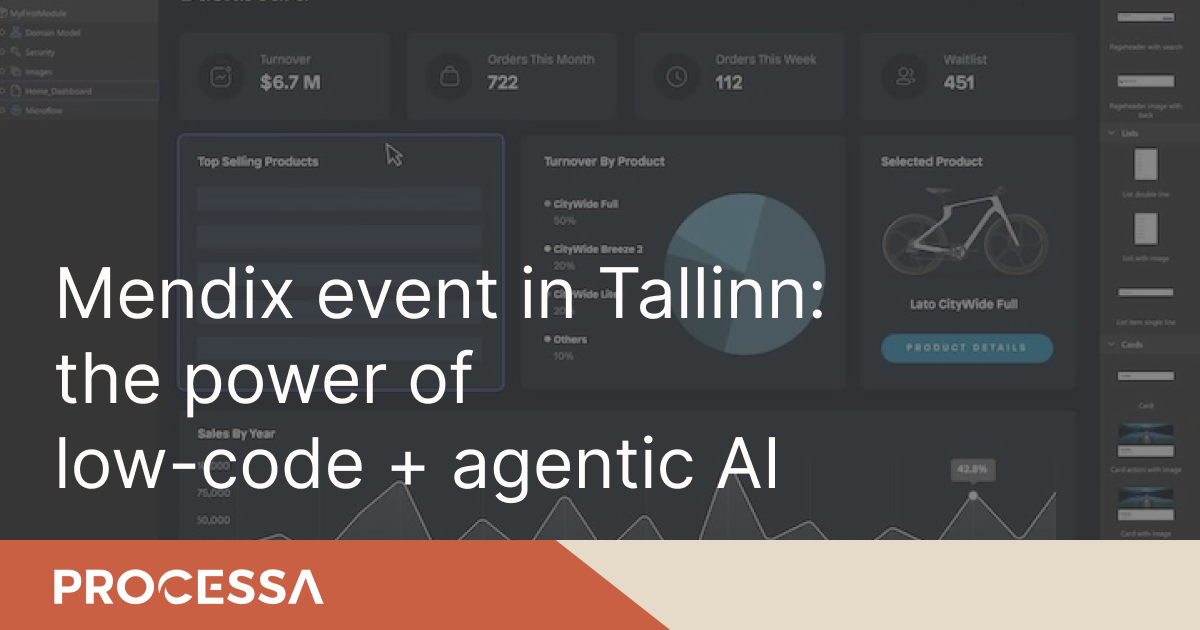In the industry, a technological revolution is underway, often referred to with buzzwords such as Industry 4.0, Industrial Internet of Things (IIoT), smart manufacturing, and smart factories. Most production managers may not fully understand these terms in detail. But should they? In this article, we explain the concept of a smart factory in plain language and provide key starting points for companies to make sense of the Fourth Industrial Revolution and where to begin its implementation.
Industry 4.0 explained
Industry 4.0 is a concept where information technology solutions are used to fully integrate all production resources (equipment, employees, data) to respond in real-time to changes in the factory, supply chain, and customer needs.
This should bring about the 4th generation revolution in industrial efficiency and competitiveness.
It is the intersection of industrial technology and information technology that helps to intelligently monitor physical production processes and use data to proactively correct and adapt production at the right time and place to reduce costs and/or increase revenues.
Implementing Industry 4.0 requires both horizontal and vertical integration of data throughout the enterprise - vertical within the company, such as between departments, and horizontal with key partners, such as suppliers, customers, etc. This requires breaking down data and knowledge silos, which is not an easy task. On the production level alone, there are various manufacturers with different levels of automation readiness, different sensors, and communication protocols. In principle, they do not "speak the same language", and to solve their communication problems, a so-called "meta-network" must first be created.
There are also obstacles at the organizational culture level - for example, fully coordinating production processes with short- and long-term business objectives across the organization. This requires creating a conscious and smooth data ecosystem with all departments that may be used to jealously guard their data and knowledge - such as quality management, design, logistics, sales, marketing, etc.
To build such a smooth digital ecosystem, manufacturing equipment connectivity and business processes need to be updated or changed. This is based on data collection, management, and analytics to make the data generated by systems, sensors, and machines practically useful knowledge. With digitization, ecosystem cybersecurity becomes critical. But the key to the revolution is transforming the company culture to successfully and unanimously adopt smart solutions.
The foundation of the revolution is the hyperconnectivity of data and resources
Through the vertical and horizontal integration of data, a company's resources should become hyperconnected - fully associated, compatible, and transparent. People, equipment, systems, and processes are connected with modern IT solutions so well that information flows smoothly across different processes and throughout the entire company.
However, for companies with old systems and data "silo towers", the movement of data can be a challenge. Fragmented work across different departments, hierarchical sequential workflows, and paper or incomplete work instructions may have worked in previous generations of manufacturing, but it no longer takes us forward.
To enable real-time collaboration among design, manufacturing, procurement, and supply chains, we need to leave behind slow, rigid, and hierarchical systems. Old boundaries blur both within the company and with its suppliers and customers.
This is where the Internet of Things (IoT) comes into play - in a smart factory, all devices are in constant communication to provide updates on statuses and changes in production and environmental parameters, and to communicate better with each other. To do this, they are equipped with smart sensors that share data over the network with servers and other devices. As a result, both physical and digital processes can be constantly coordinated and optimized or built into super-flexible autonomous systems capable of some self-management.

Industry 4.0 vs Lean – are they the same or complete opposites?
How does this relate to another important concept – lean manufacturing? One idea is to make systems as straight, simple, and waste-free as possible, while Industry 4.0 talks about increasing complexity and variability.
The simple answer is that lean and Industry 4.0 should complement each other. As Einstein once said: "Everything should be made as simple as possible, but not simpler." This is where the lean methodology helps, including process visualization and transparency. Only after organizing the system in this way, should we start building a digital ecosystem to avoid automating (and thus accelerating) waste.
Consulting firms McKinsey and BCG even argue that the combination of Lean and Industry 4.0 is greater than the sum of its parts. While each approach individually may have a benefit of around 15%, integrating them can bring cost savings of up to 40%. The main benefit comes from improved quality, reduced waste and downtime, and increased labor efficiency.
How to implement Industry 4.0 revolution in a company as smoothly as possible
Successfully implementing the Industry 4.0 revolution could result in:
- Increased productivity and optimized production
- Greater cost-effectiveness• Better collaboration and information flow
- Flexible production, work time, and other resource planning
- Greater employee satisfaction with smarter work
- Smarter management, clear overview, adaptability, and faster growth
Although building a digital manufacturing ecosystem or smart factory may seem like a daunting investment, the reduction in operating costs often pays off within just a few years. But where to start when employees may not even be familiar with the technology?
The truth is that employees may not be ready for the next industrial revolution, especially if the company has been operating on the border of second-third generation solutions so far. However, no investment can be profitable if nobody knows how to use it. Therefore, investing in employee training and retraining is essential, and be prepared for some resistance – after all, development and learning are always somewhat uncomfortable, even if necessary.
From a technological implementation standpoint, the easiest way to connect data, equipment, processes, and tasks is through low-code solutions that act as a "glue" between legacy systems, helping existing systems to work together quickly, easily, and flexibly. They can quickly increase visibility within the company and improve collaboration between various stakeholders.
Here's an example of an IoT application created on Mendix in just 10 days for tracking the supply chain.
Processa Technologies is Siemens Mendix's partner in the Baltics. Mendix is a low-code platform that allows for 7-10 times faster process automation through software and is ideal for digitizing production processes and creating integrations.








